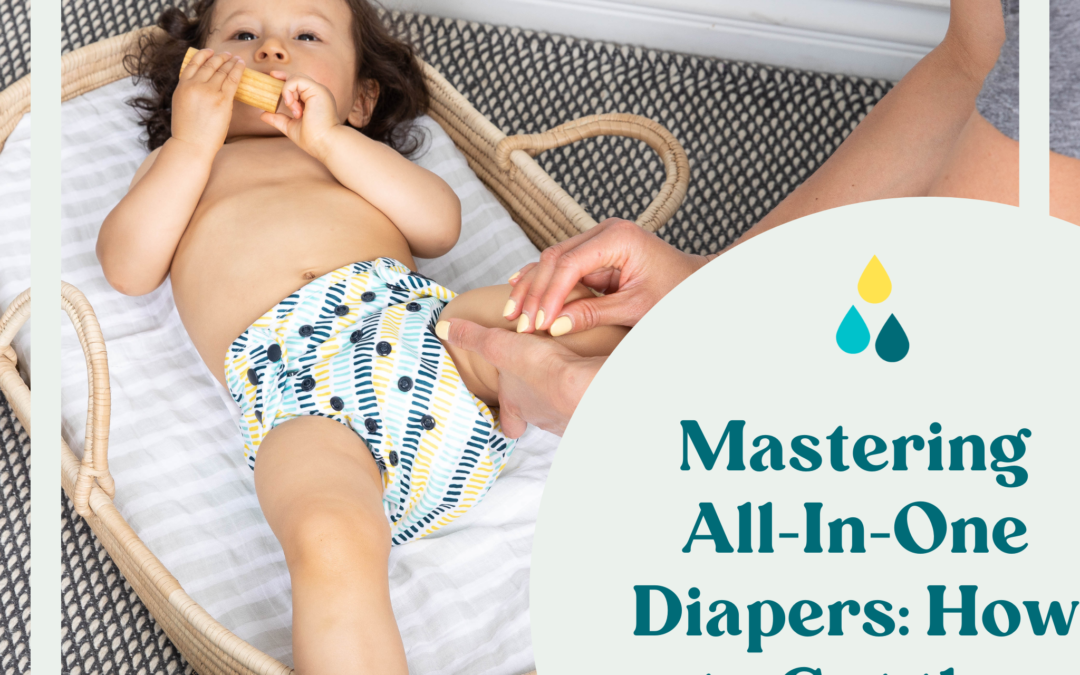Embarking on the cloth diapering journey is not just about sustainability; it’s about providing your baby with the best care possible. While leaks might seem like a minor hiccup, they’re all part of the learning curve, and you’re not alone in navigating it. Fear not! We’ve compiled a list of tips to help you prevent leaks when using All-in-One cloth diapers.
1. Choose the Right Size:
- Leaks can be a sign that your baby needs to move to the larger diaper. We have two sizes of All-in-Ones – Newborn and One Size. Newborns fit from about 6-13lbs, and the One Size fit about 13+lbs.
- Consider trying the next size up if leaks persist, especially if your baby is on the cusp of the weight range for the current size. If you’re in our diaper service you can request to try a few or switch to the next size at any time.
- Pay attention to the fit around the legs and waist – the diaper should be snug but not too tight. See this video on how to fit an All-in-One diaper on your baby.

2. Change Diapers Regularly:
- Set a timer or use diaper change reminders to ensure you’re changing your baby every two hours or after a bowel movement.
- Keep a consistent changing routine, even if the diaper doesn’t feel excessively wet. Regular changes prevent leaks and maintain your baby’s comfort.
- Be attentive to your baby’s cues – if they seem uncomfortable or fussy, it might be time for a diaper change.
3. Boost Absorbency & Make Adjustments:
- For extended wear, such as during naps or overnight, add extra absorbency. You can add a prefold or a second pad to your diaper to add absorbency.
- Fleece Stay-Dry Liners can be added to any diaper. They wick moisture away which helps baby feel drier, longer. A great addition for naptimes and overnights.
- If you’re using Luludew All-in-Ones, take advantage of the design features. You can unsnap the pad in the front or back to allow the diaper to stretch out more. This adjustment can provide a better fit and reduce the likelihood of leaks.
- Compression leaks occur when an already wet diaper is squeezed, like wringing out a rag. Avoid compression leaks by ensuring a tight fit, adding absorbency, and changing the diaper often enough so that it is not carrying too much liquid.
 Remember, leaks can be a common challenge in both disposable and cloth diapering. By following these tips, you can minimize the likelihood of leaks and get the best fit possible for your baby! Should you ever seek guidance or have questions, we’re here for you. Reach out anytime, and let’s make your cloth diapering journey a joyful, leak-free success together. Happy diapering! 🌟
Remember, leaks can be a common challenge in both disposable and cloth diapering. By following these tips, you can minimize the likelihood of leaks and get the best fit possible for your baby! Should you ever seek guidance or have questions, we’re here for you. Reach out anytime, and let’s make your cloth diapering journey a joyful, leak-free success together. Happy diapering! 🌟


